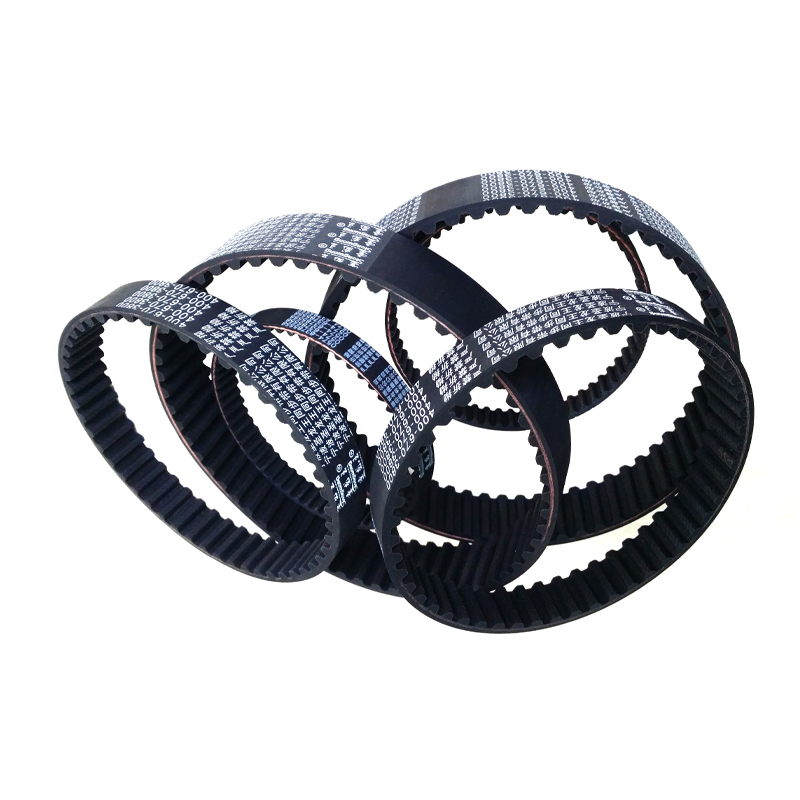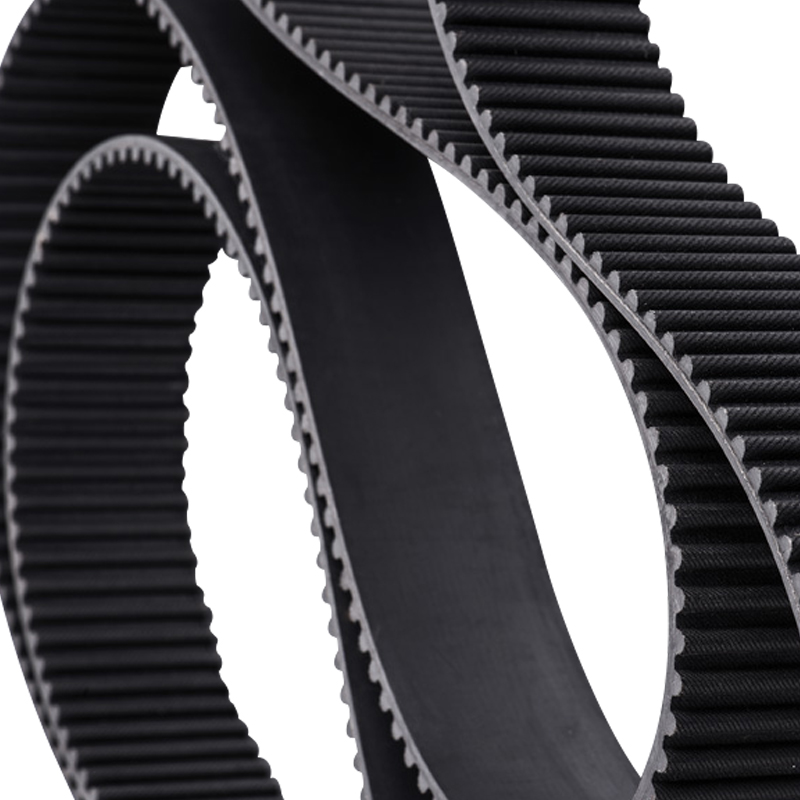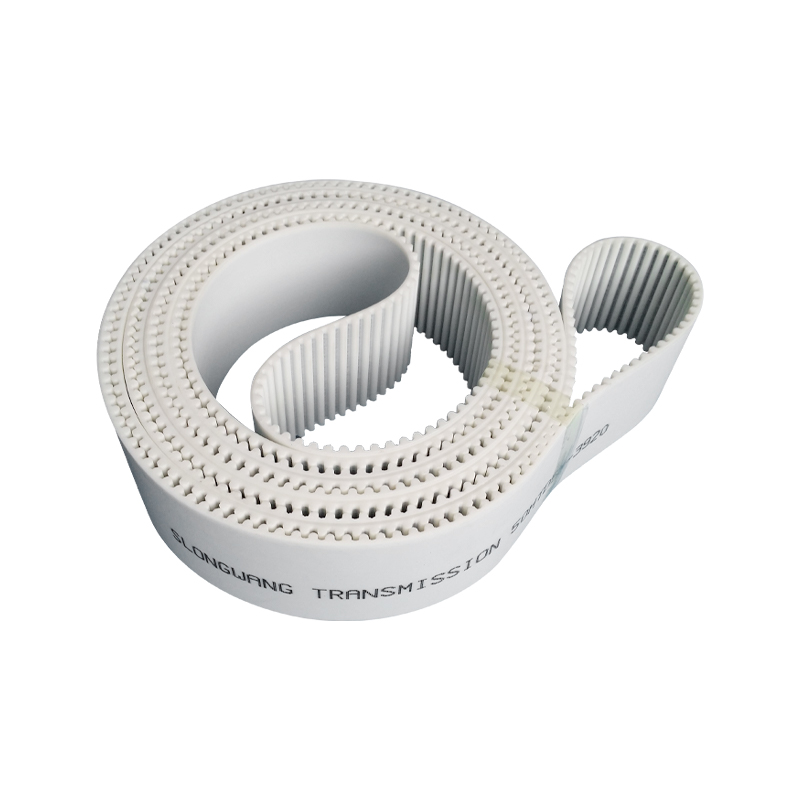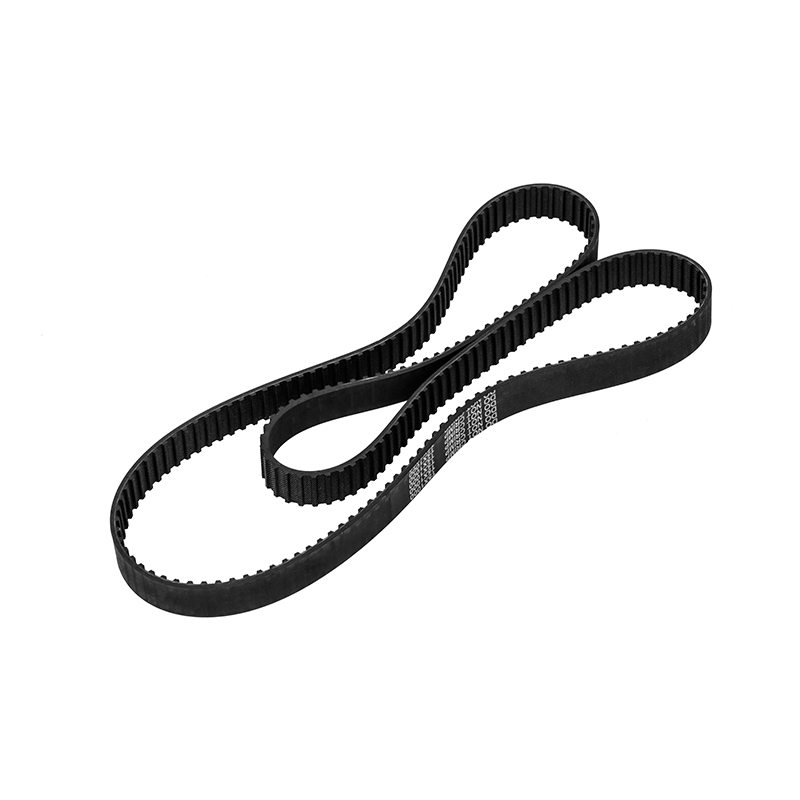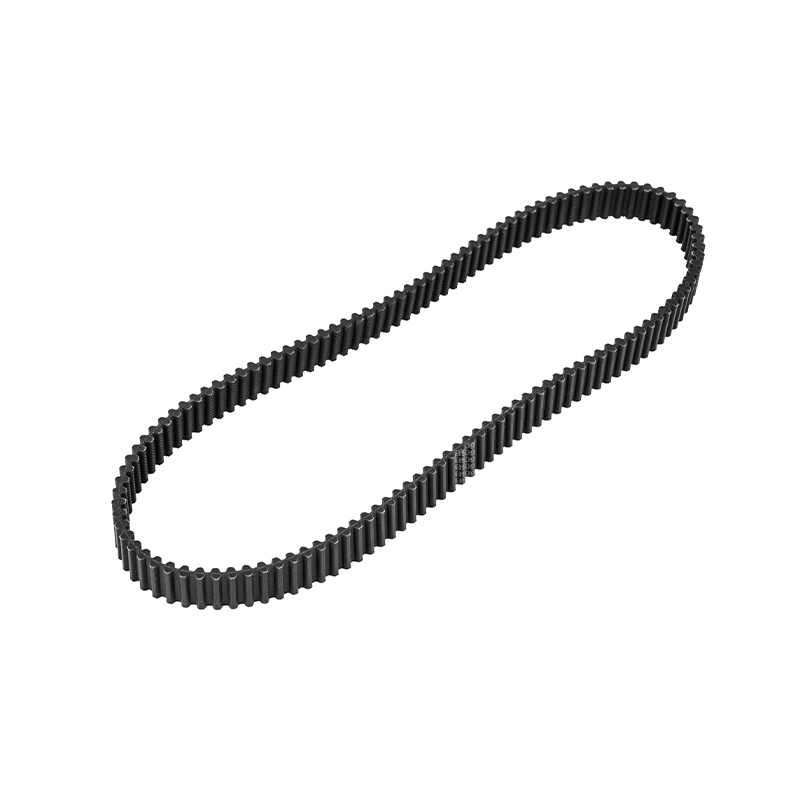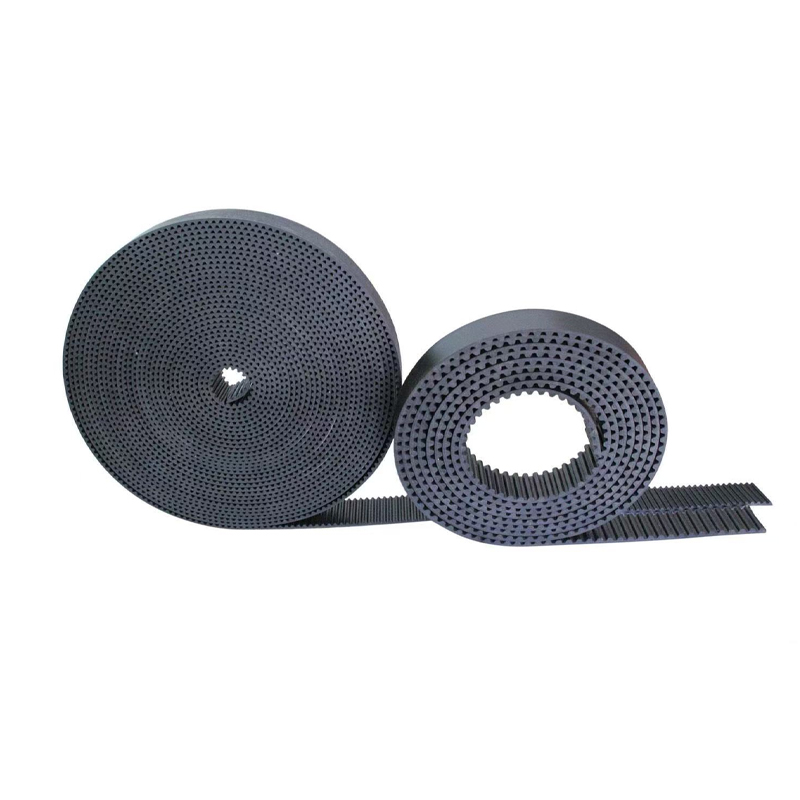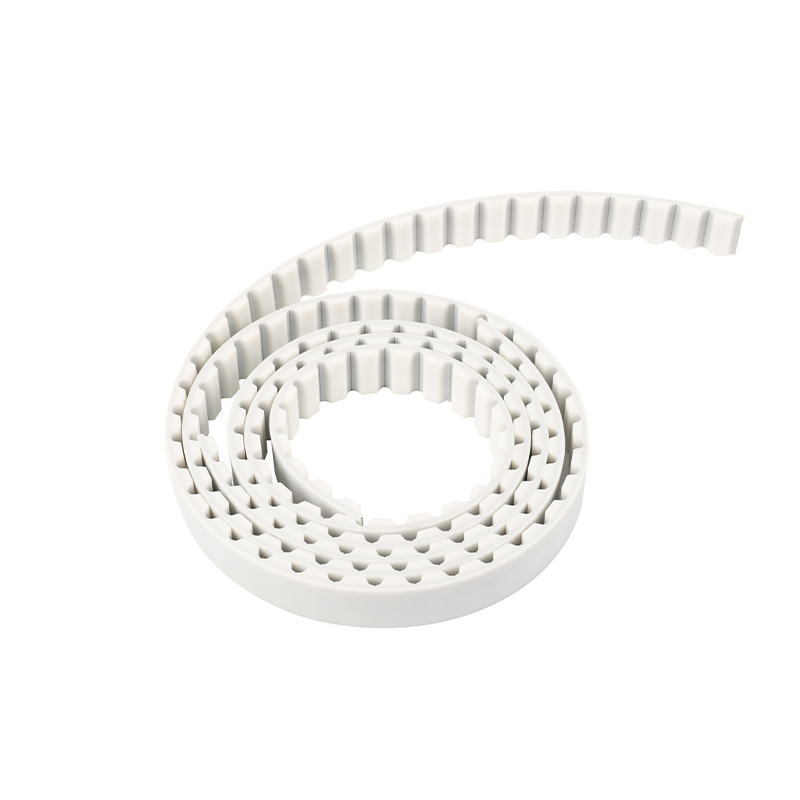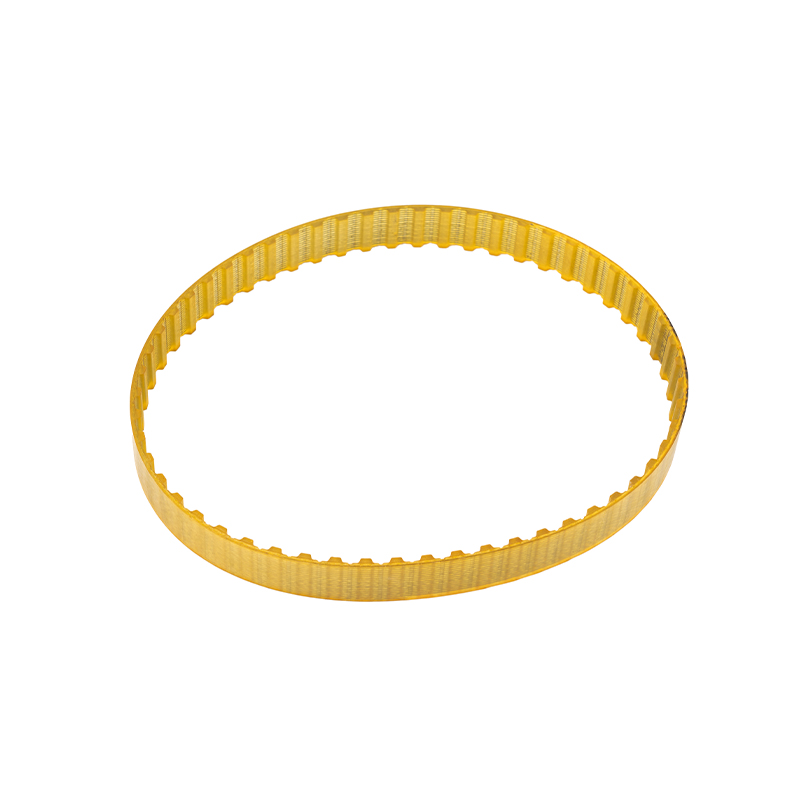What are the causes of tooth wear on rubber timing belts
2025-04-30
Wear mechanism of material properties and mechanical interaction
The tooth surface wear of rubber synchronous belts is mainly caused by the tribological behavior between the belt teeth and the pulley tooth grooves. The chloroprene rubber matrix exhibits viscoelastic deformation characteristics under dynamic load, resulting in uneven distribution of tooth surface contact stress. When the hardness of the tooth surface is lower than Shore 65A, its yield strength is not enough to resist the shear force applied by the gear teeth, which easily causes the expansion of microcracks. Taking a textile machinery as an example, when the tooth surface hardness of the synchronous belt is 60A, after 500 hours of operation, obvious flaking phenomenon occurs. When the hardness is increased to 70A, the service life of the synchronous belt is extended to 2000 hours, showing a significant effect of hardness on wear tolerance.
The roughness of the pulley tooth surface is also an important factor affecting wear. When the pulley surface roughness Ra exceeds 1.6μm, the nature of the tooth surface contact changes from elastic deformation to plastic deformation, and the friction coefficient also increases sharply from 0.3 to 0.6, significantly accelerating the wear of the tooth surface. The test results of a certain automobile engine timing system show that the pulley tooth surface (Ra=0.4μm) after superfinishing can effectively reduce the wear of the synchronous belt tooth surface by 70%, and the noise level is reduced from 65dB to 52dB, which reflects the importance of surface treatment in improving the performance of synchronous belts.
Synergistic effect of environmental media and chemical corrosion
In industrial environments, the combined effect of abrasive particles and chemical media has a significant superposition effect on the wear of tooth surfaces. For example, in mining equipment, after quartz sand dust particles are embedded in the tooth surface gap, their Mohs hardness reaches 7, which is much higher than the 1.5 of rubber, causing the three-body wear rate to increase to 0.2mm3/h, which is about 5 times that of clean environment. In addition, the aromatic hydrocarbon solvents contained in the oil mist can penetrate the rubber matrix, causing swelling and cross-linking fracture. In the case of a food processing equipment, after the synchronous belt was operated in a steam environment containing 5% isopropyl alcohol for 3 months, the tooth surface hardness decreased by 40%, and obvious viscous wear occurred.
Effect of temperature gradient on tooth surface wear
The effect of temperature gradient on tooth surface wear cannot be ignored. When the tooth surface temperature exceeds 85℃, the storage modulus E' of chloroprene rubber will drop from 120MPa to 40MPa, resulting in tooth mismatch. In an experiment of a CNC machine tool, after the synchronous belt ran for 200 hours at 100℃, the tooth height error expanded from 0.05mm to 0.2mm, and the transmission error increased by 300%, indicating that the high temperature environment has a great impact on the performance of the synchronous belt.
Stress concentration of design defects and installation errors
A pulley diameter that is too small will cause stress concentration at the tooth root. According to the ISO 5294 standard, the minimum recommended pulley diameter of the synchronous belt is positively correlated with the pitch. When the pulley diameter is less than 15 times the pitch, the bending stress at the tooth root will exceed the allowable stress of the rubber, resulting in the formation of fatigue cracks. In the case of a printing machinery, the misuse of a pulley with a diameter of 10 times the pitch caused the synchronous belt to break at the tooth root after running for 800 hours. After replacing it with a pulley that meets the standard, its service life was increased to 5000 hours, which fully illustrates the importance of design specifications.
In addition, improper installation tension control is also a common cause of tooth surface wear. When the tension exceeds 120% of the design value, the tooth surface contact pressure will increase from 2.5MPa to 5MPa, accelerating the wear of the tooth surface. In a test of a certain packaging equipment, the tooth surface wear rate increased by 25% for every 10% increase in tension. At the same time, when the non-parallelism of the pulley axis exceeds 0.5°, the tooth surface will be subjected to lateral force, resulting in asymmetric wear. For example, a conveyor system caused the pulley to deviate due to installation errors, resulting in a single-side tooth surface wear rate of the synchronous belt that was three times that of the opposite side, further emphasizing the importance of precise installation.


 English
English 中文简体
中文简体